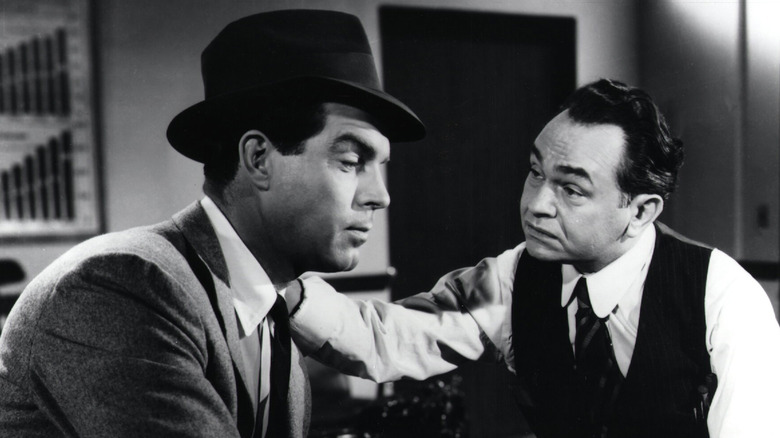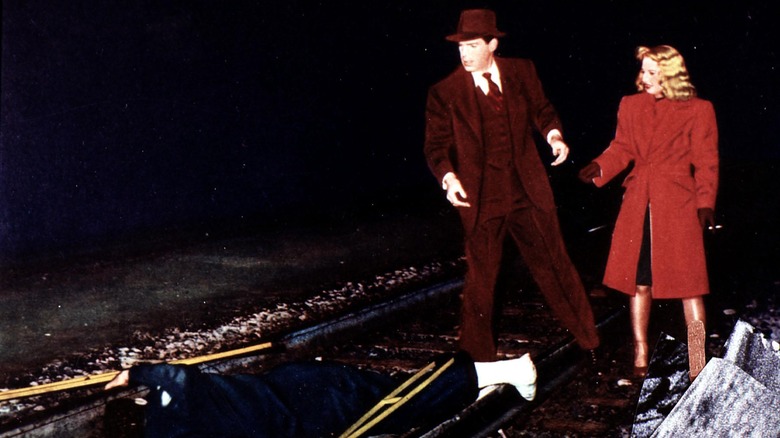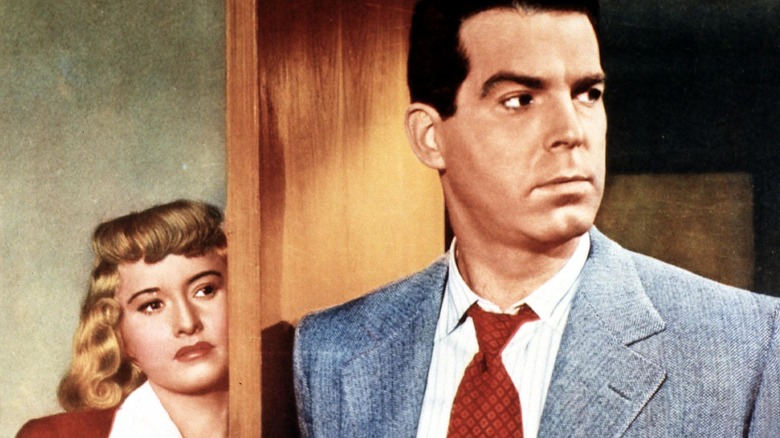The Real-Life Murder That Inspired Double Indemnity
Sometimes fact is so much stranger than fiction, fiction has no choice but to copy fact. "Double Indemnity," a 1943 novel by James M. Cain, was adapted into a film the following year by Billy Wilder and Raymond Chandler. A classic noir, "Double Indemnity" stars Fred MacMurray as Walter Neff, an insurance salesman who conspires with his paramour Phyllis Dietrichson (Barbara Stanwyck) to murder her husband (Tom Powers) and collect on a double indemnity policy in his name. However, the film's underlying inspiration is not Cain's novel, but a 1927 murder that dominated news coverage.
The strange case of Henry Judd Gray and Ruth Snyder
In 1925 Queens, homemaker Ruth Snyder began an affair with married corset salesman Henry Judd Gray. Their adultery turned lethal two years later when they killed Snyder's husband, Albert. The night of March 20, 1927, the lovers knocked out Snyder, stuffed a chloroform-coated sock up his nose, then strangled him to death with a window wire; they staged the murder as a break-in. To make things extra juicy, Snyder forged her husband's signature for a $100,000 double indemnity insurance policy. It took only a matter of hours for the plan to fall apart.
The police were immediately suspicious about Ruth Snyder's claims of a break-in, and when they discovered the jewelry supposedly stolen by the intruders hidden under her bed, Snyder caved and fingered Gray. Gray confessed but tried to shift the blame, claiming Snyder had manipulated him into killing her husband. This blame game did no good, and the two were tried and then executed in 1928.
A media frenzy swarmed in the lead-up to this ghastly conclusion, despite the previous anonymity of its players. This was the era of William Randolph Hearst's yellow journalism, after all. The papers lured in readers with exaggerated details, recounting the events with the lurid glamor of a Hollywood film. It should be no surprise, then, that the murder made its way to Hollywood.
Reality vs fiction: Gray and Snyder vs Neff and Dietrichson
While Ruth and Snyder's killing was famously inept, Neff and Dietrichson's plan is quite carefully laid. The film makes the point that due to Neff's inside knowledge of the insurance industry, he's the perfect man to game the system. In the end, the two are done in thanks to something beyond their control: Mr. Dietrichson had injured his leg shortly before his death, but never filed a claim on the policy that Phyllis forged in his name. Claims adjuster Barton Keyes (Edward G. Robinson) sniffs this out.
One thing the tales have in common is that the lovers turn on each other as the walls come closing in. However, the results are different in life, literature, and film. Contrasting the swift justice of reality, Cain's original novel ends with Walter and Phyllis committing a double suicide to escape justice. In Wilder's film, Walter kills Phyllis and lies waiting with Keyes for the police to arrive; deleted footage shows Walter going to the gas chamber.
The real Ruth Snyder and Henry Judd Gray were eclipsed by the media's sensationalized portraits of them. It's these versions whose souls inhabit the killers of "Double Indemnity"; a tabloid description of Ruth as a femme fatale or a "synthetic blonde murderess" is an on-point description of Phyllis. This immortality may not be the legacy two killers deserved, but audiences just can't resist a murder good story.


